We’ve now got results in most seats in the UK general election. There are twenty-two seats that will not begin counting until later today, and there is one seat, Thirsk & Malton in North Yorkshire. Apart from those twenty-three seats, there are 14 seats yet to declare. Eight of these seats are in London, where the count was delayed due to local borough elections. There are two in the North West, one in Northern Ireland, one in Essex just outside of London, one in the East Midlands and one in the West Midlands.
Overall, results have varied remarkably, with the Conservatives winning seats far down their target list and missing out on seats that were held by only slim margins. The Liberal Democrats overall have lost ground, suffering a net loss of seven seats, although their losses were greater, and were compensated with a number of gains. The SNP and Plaid Cymru have ended up with the same number of seats that they won in 2005, as has the Social Democratic and Labour Party and, depending on the result in the final Northern Ireland seat, Sinn Fein may also achieve a consistent result.
Independents have lost their seats in Blaenau Gwent and Wyre Forest, while Sylvia Hermon, formerly a member of the Ulster Unionist Party, has retained her seat as a pro-Labour independent unionist. The Ulster Unionists, who dominated Northern Irish politics for most of the twentieth century, have been left with no seats for the first in their history. Green Party leader Caroline Lucas has made history by winning a seat for her party in the Commons for the first time, winning Brighton Pavilion in a close three-way race against the Conservatives and Labour. Results have not been declared in the key Respect seats of Bethnal Green & Bow, where George Galloway won in 2005, and Poplar & Limehouse, where he is running this time.
The overall seat results are reflected in the following table (which will be updated as the final seats are declared):
In terms of popular vote, the Conservatives have clearly come out on top. Amongst the 613 seats which have declared, the Conservatives have polled 36.1%, which is a swing of almost 4% since 2005. The Labour vote is down over 6% to 29.2%. The Liberal Democrats have largely failed to gain the extra popular votes that have been universally indicated in recent polls, only polling 22.9%, just 1% higher than the 2005 result. Due to the fact that the Lib Dems had more marginal seats vulnerable to the Conservatives, the swing from Labour to the Tories saw the Lib Dems lose seats despite an increase in their vote.
The election result in Scotland was remarkably dull, compared to the rest of the UK. Every single seat was won by the same party as in 2005, with the exception of Glasgow North East, which was won by then-Speaker Michael Martin in 2005, and was won back by his former Labour party at a 2009 by-election. Labour even managed to win back two seats that had been lost to the Liberal Democrats and the SNP in by-elections over the last term. The Lib Dems have held ten seats, and are expected to retain their eleventh seat of Argyll & Bute after the votes there are counted. The SNP has managed to hold the six seats they won in 2005, but lost the seat of Glasgow East, which they had won in a 2008 by-election. The Conservatives, despite winning the largest number of seats in the UK, have only retained a single seat on the English border. In terms of popular vote, the Scottish Labour Party won over 40% of the vote, with the three other main parties winning between 16% and 20%.
There was more change in Wales, where the Conservatives gained more ground. Labour still maintained a majority of seats, falling from 30 to 26. Labour lost four seats to the Tories and one to Plaid Cymru, but regained the seat of Blaenau Gwent from independent Dai Davies. Blaenau Gwent is traditionally very strong for Labour, but was lost at the 2005 election after a battle of candidate selection. The Conservatives gained a fifth seat from the Liberal Democrats, gaining the relatively safe seat of Montgomeryshire from colourful MP Lembit Opik in a shock result. This gave the Tories a total of eight seats, and saw them overtake the Lib Dems as the second-biggest party in Wales. Plaid had won three seats in 2005, but the redistribution saw the boundaries in northwestern Wales dramatically redrawn and one of their seats was abolished, so their gain off Labour simply brings them back to their 2005 result. In terms of popular vote, Labour achieved their result with only 36% of the vote, with 26% for the Tories, 20% for the Lib Dems and 11% for Plaid.
The result in Northern Ireland was largely consistent, but with a few dramatic results. DUP leader, and Northern Ireland’s first minister, Peter Robinson, lost his seat of Belfast East with a 22% swing to Mayor of Belfast Naomi Long, the deputy leader of the Alliance Party. The Alliance are the only significant non-sectarian party in Northern Ireland, but despite contesting elections for almost 40 years have never before won a seat at Westminster. They have a loose alliance with the Liberal Democrats. In the neighbouring seat of North Down, sitting MP Sylvia Hermon was re-elected as an independent with the tacit support of the DUP. Hermon had been the sole remaining MP from the Ulster Unionist Party, but was considered sympathetic to Labour and left the party when they renewed their classic alliance with the Conservative Party. The alliance of the UUP and Conservatives failed to win a single seat in a country they dominated only a decade ago. The DUP held on to their eight remaining seats, and the moderate nationalist Social Democratic and Labour Party held on to their three. Sinn Fein has retained four of their five seats and are still waiting on a result in Fermanagh & South Tyrone, where the DUP and UUP have supported a common candidate in independent unionist Rodney Connor. If Sinn Fein retain the seat it will be the first time that the unionist forces have failed to win a majority of seats in Northern Ireland, with the DUP and Hermon only holding nine seats out of eighteen.
I will be posting full result breakdowns for these three countries and the nine regions of England over the next few days once the final 35 seats have been declared, but for now I have posted some large maps showing the election results for different areas in 2005 and 2010, you’ll need to click them and enlarge them to full size to see the full detail in each map.
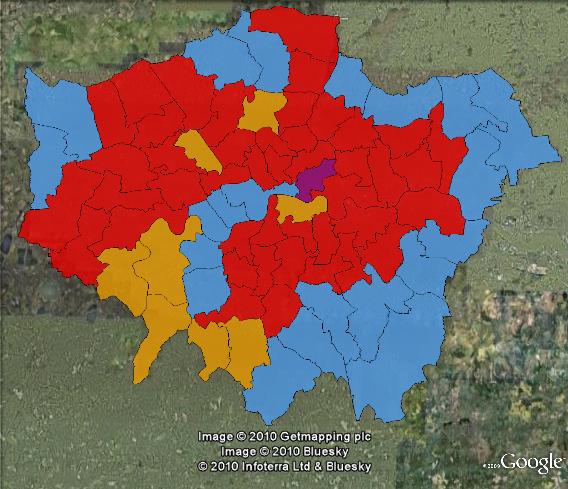
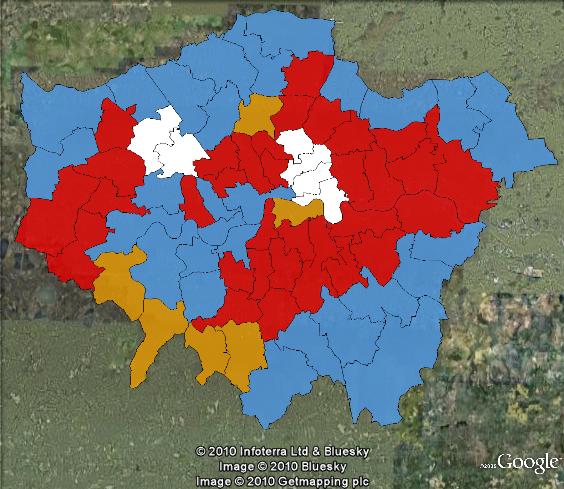
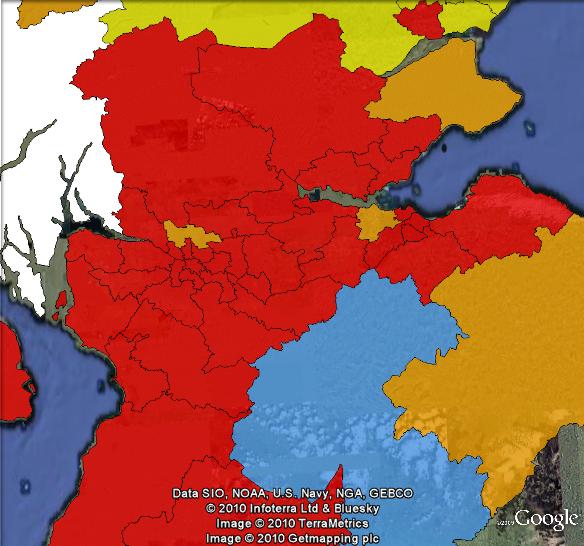
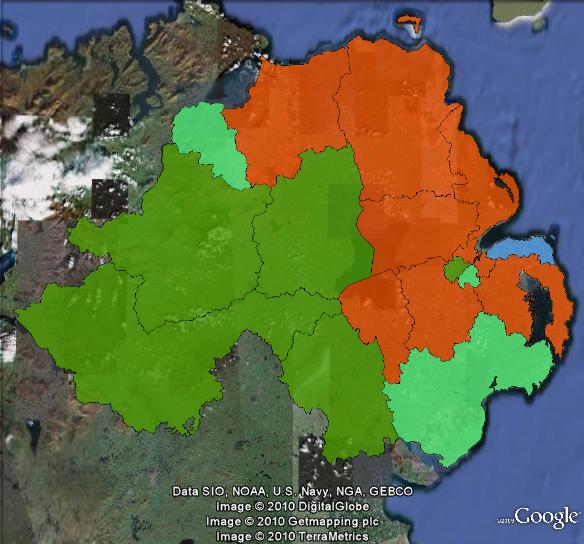
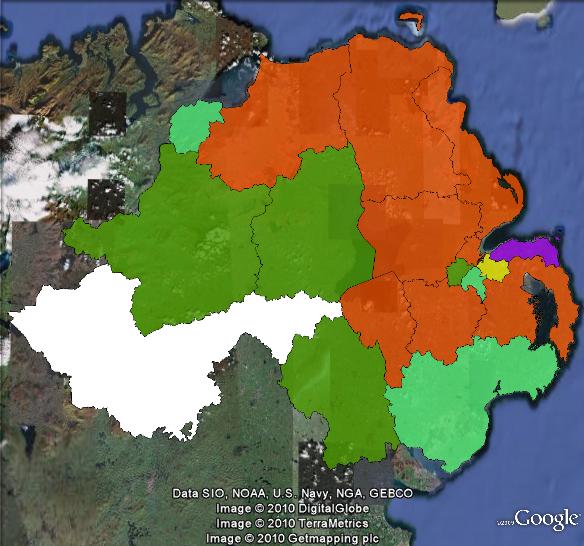
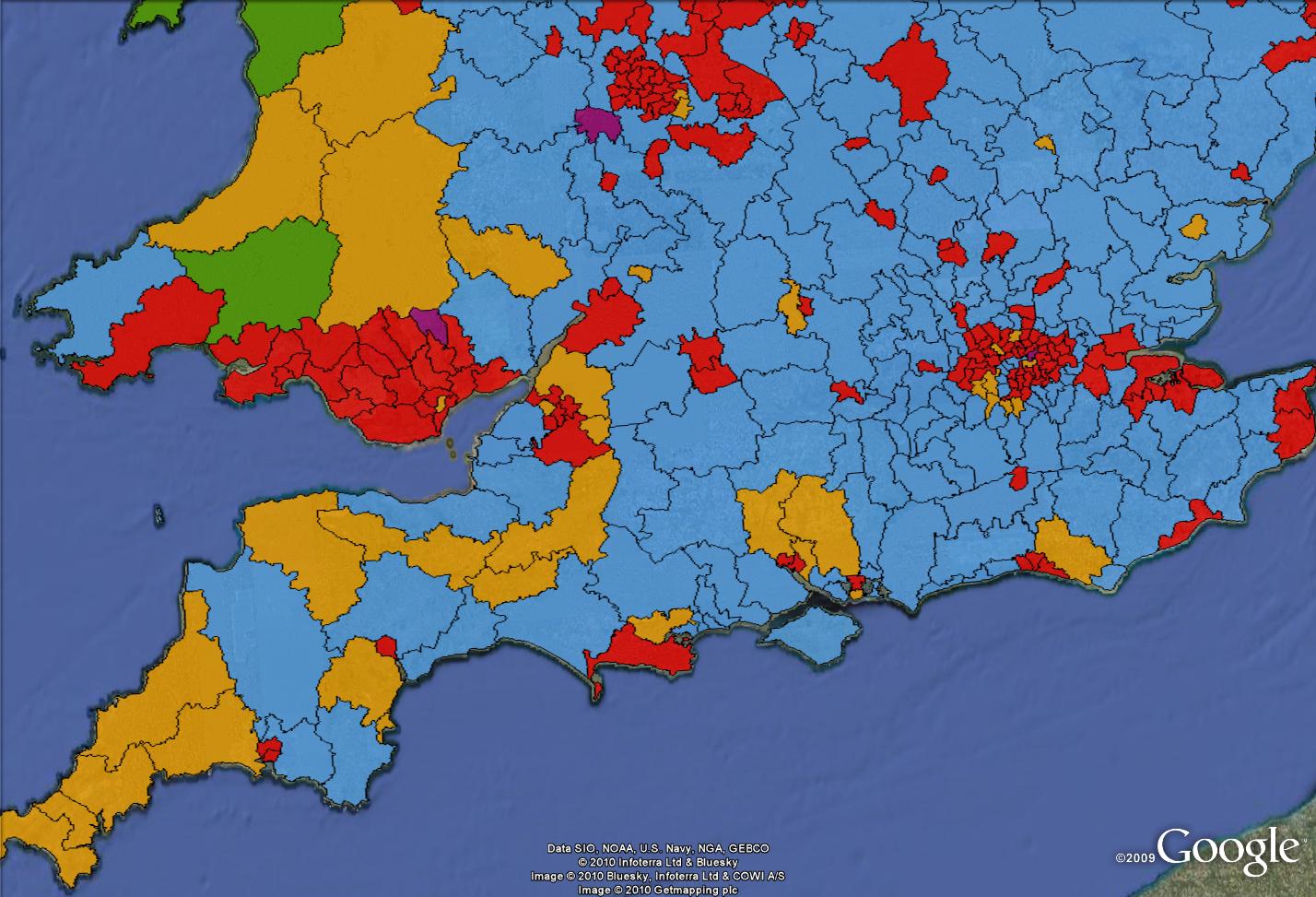
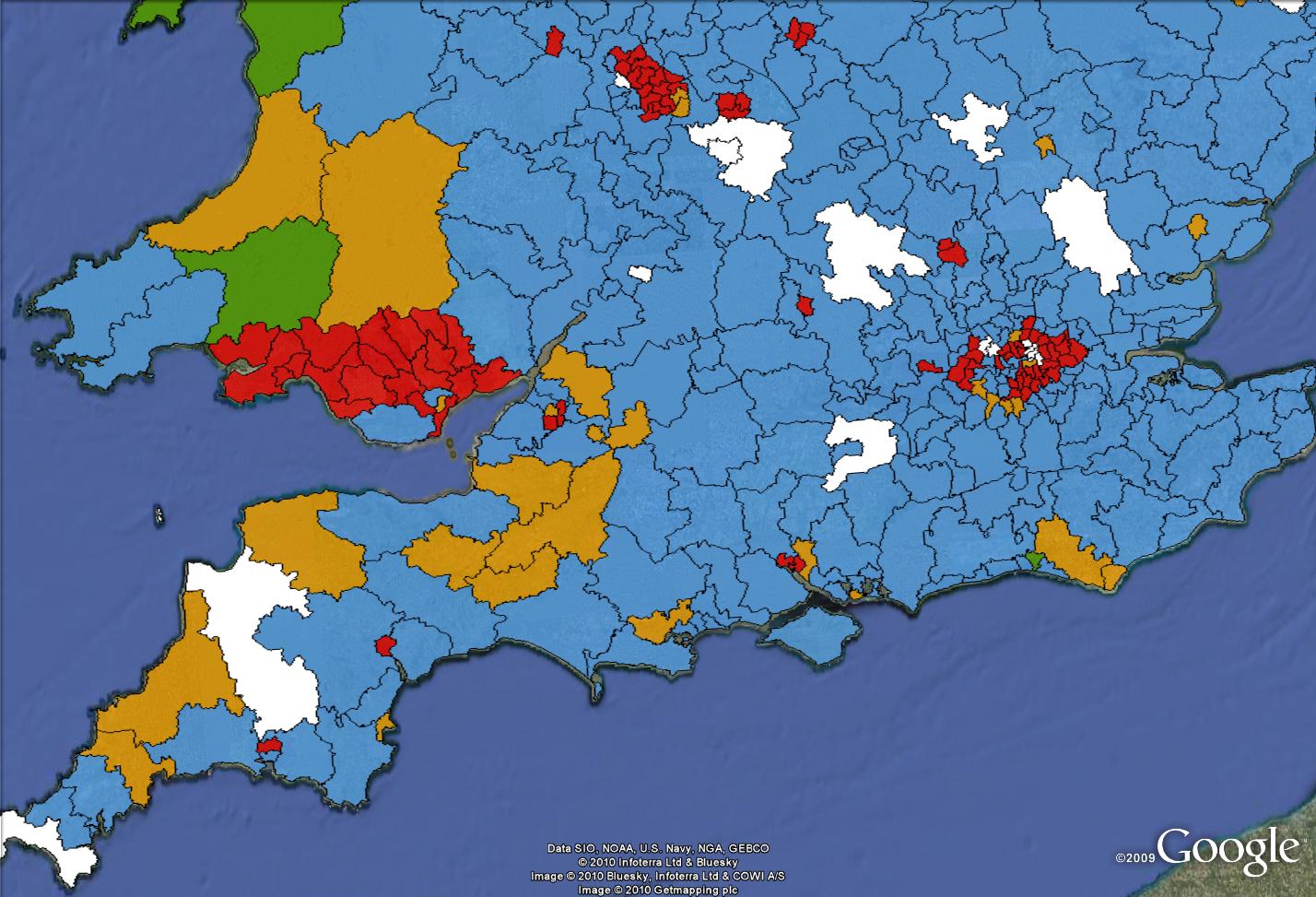
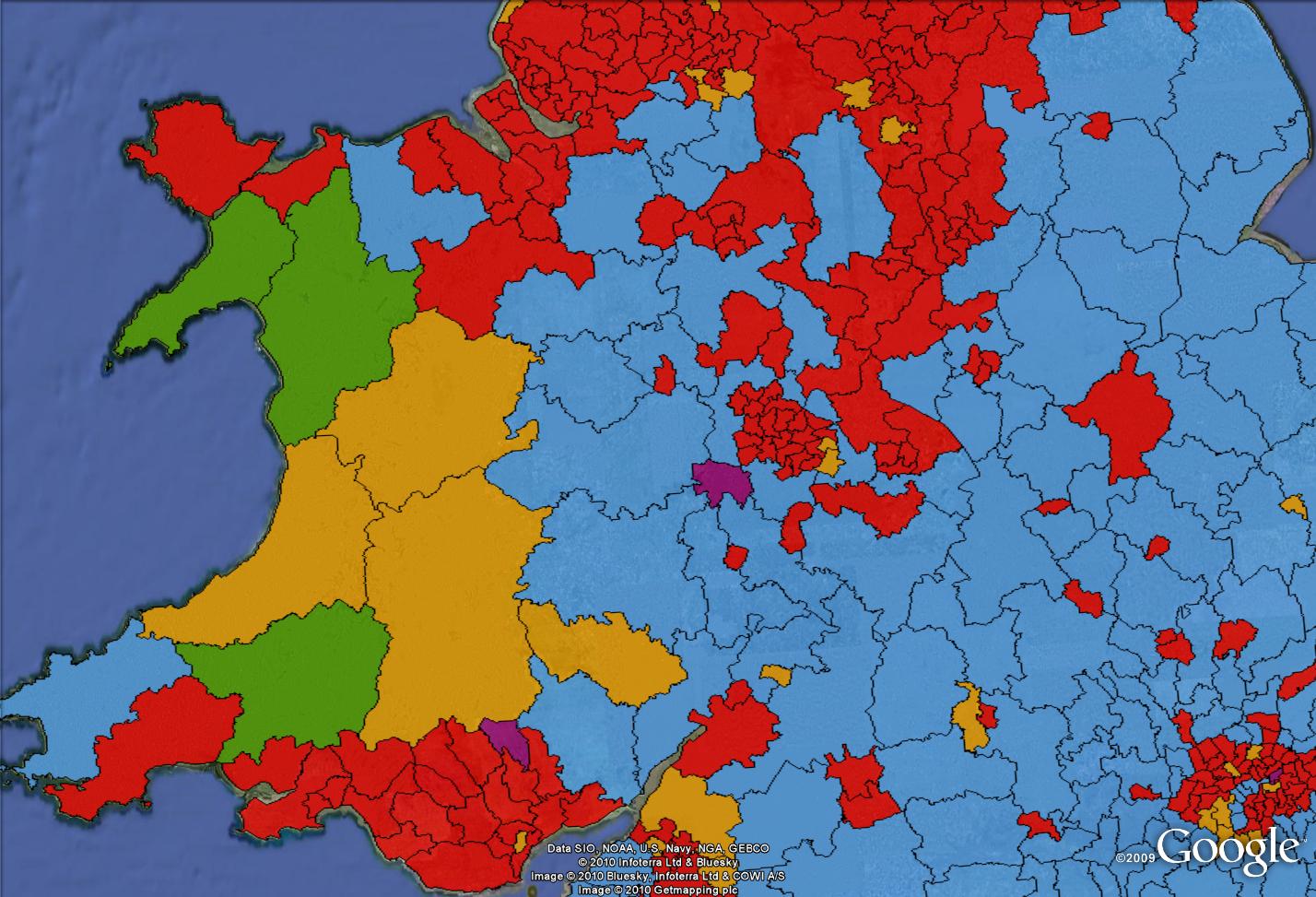
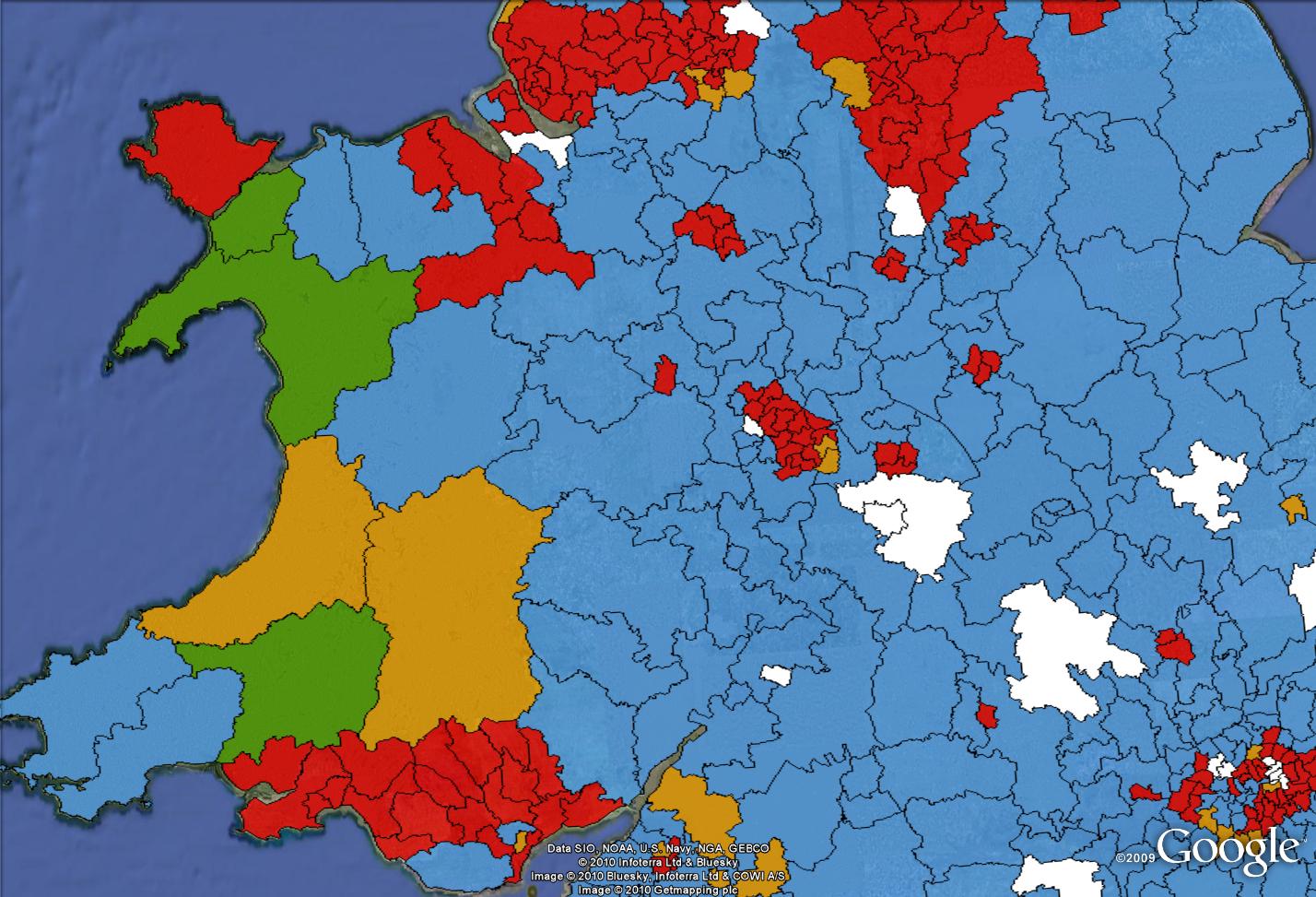
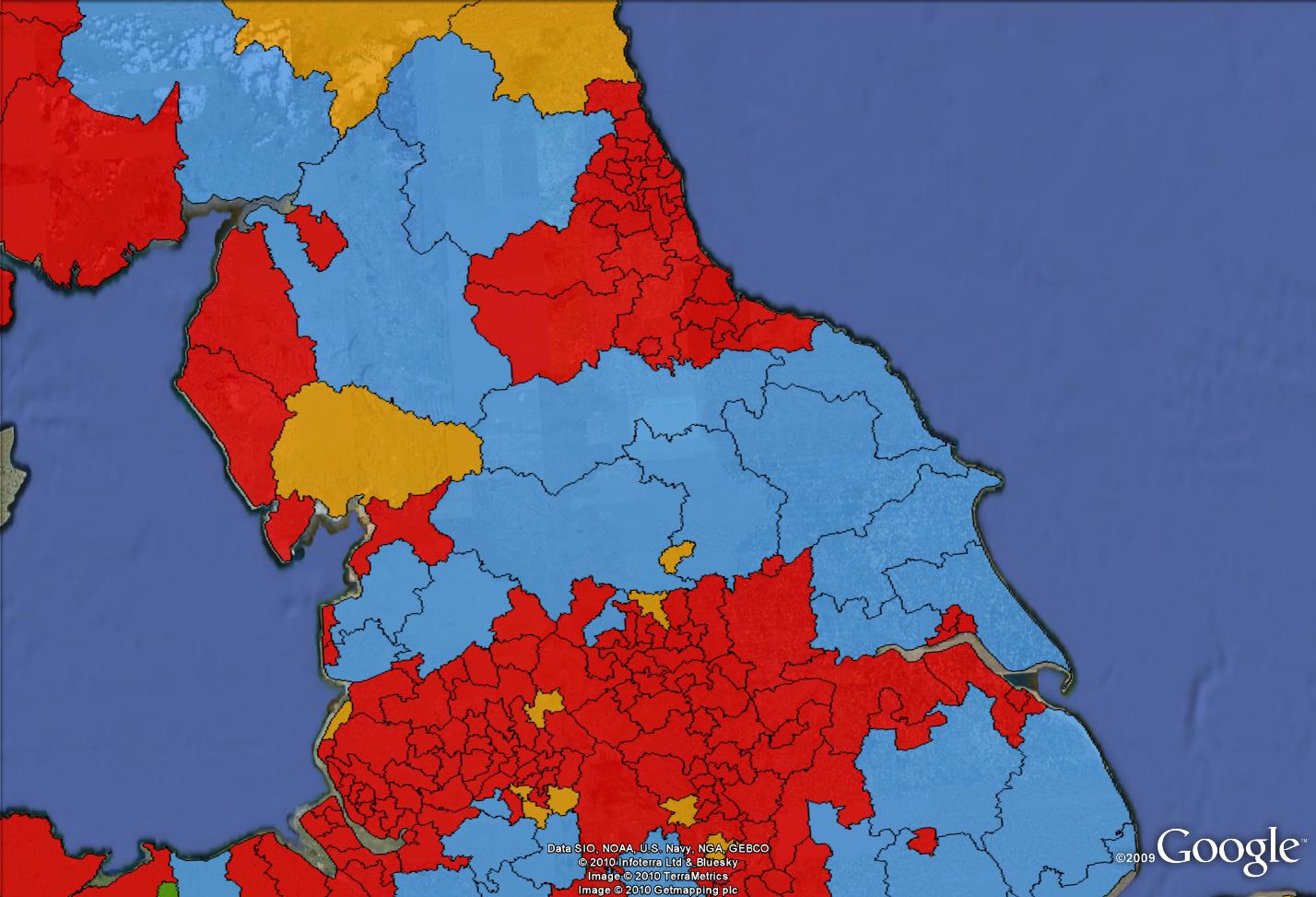
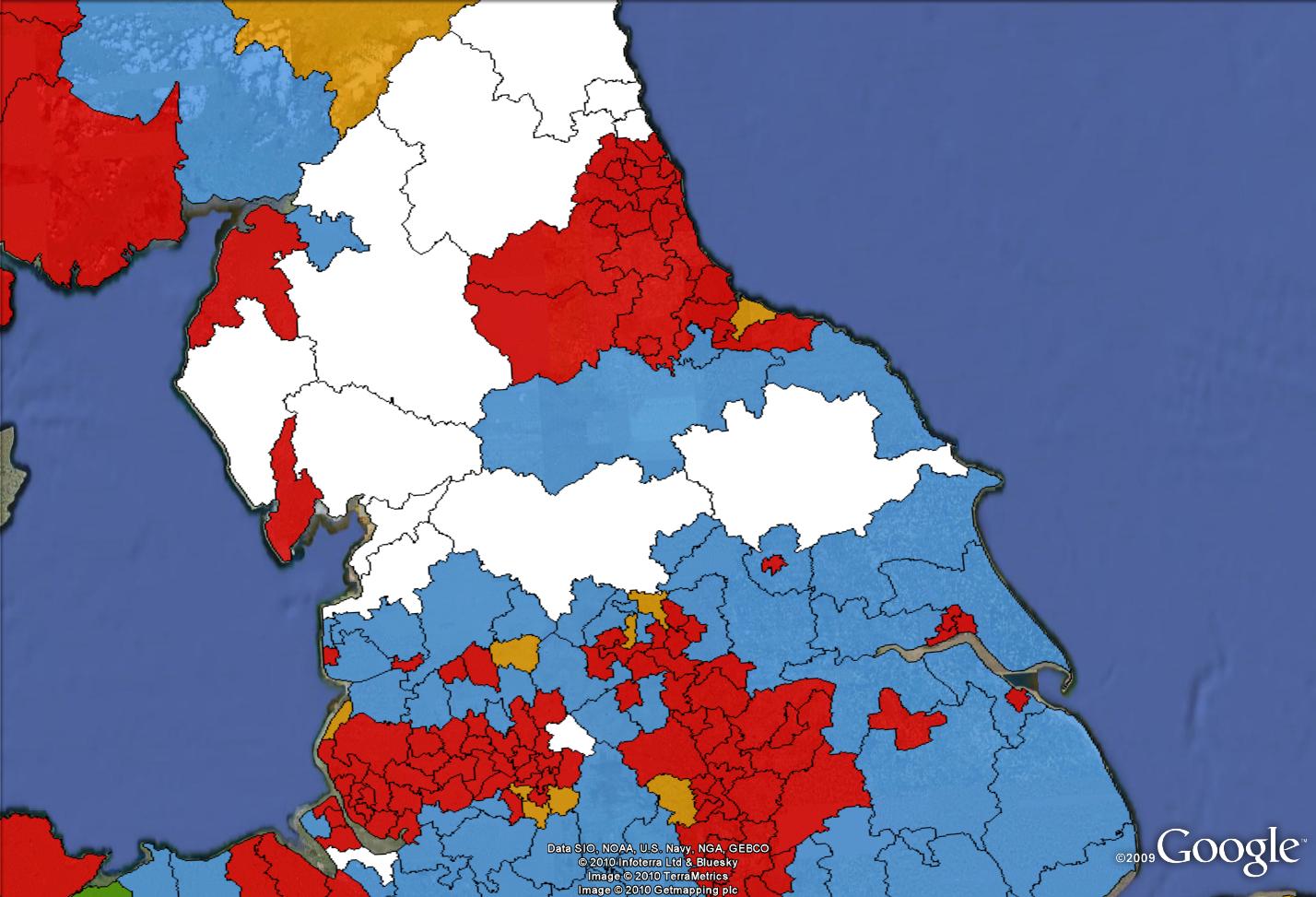



Sarah Teather does it again, winning Brent Central.
Galloway finishes third in Poplar & Limehouse. Labor actually gains a 4% swing. The punters were going for the Tories to win there, Galloway wasn’t very fancied, nor is the new Respect candidate in Bethnal Green & Bow, where Labour were short-priced favourites.
All seats are now in for Yorkshire (excluding Thirsk of course) and Scotland.
All seats are now also declared in East Anglia, South East and North East.
In the North East, the Tories have pipped the Lib Dems for second place in share of the vote.
Finally the result is in for Fermanagh & South Tyrone – Sinn Fein have held on by 4 votes.
The concurrent local elections in England were good for Labour, gaining control of a number of councils, including Liverpool.
http://news.bbc.co.uk/nol/shared/election2010/council/html/region_99999.stm
Tories muffed it; though I expect they’ll sneak a majority within a year or two, electoral reform permitting. Their showing in London was slack; just a 2.2% shift. Amazing how the maps consistently go from darkest blue to blueless as the crow flies north.
Here’s a couple of interesting things:
Turnout overall wasn’t up as much as you’d expect if it was to cause administrative headaches. It was up in all regions except Northern Ireland, where it was significantly down.
There are of course lots of fascinating individual results. Check out Ashfield in the East Midlands, where the Lib Dems came from a distant third to within 200 votes of snaring the seat from Labour:
http://news.bbc.co.uk/2/shared/election2010/results/constituency/a06.stm
And for an idea of what the election result may have looked like under PR, I’ve calculated how many seats each party may have won if the seats in each region were allocated proportionally. The result is CON 233, LAB 196, LD 149 and 72 others. Under that scenario it would be a straightforward matter of a deal between the Lib Dems and either of the other main parties delivering a comfortable majority.
People all around the world are ‘abused’ and not represented through corrupt electoral systems. NO wonder people become disinterested and do not vote. Here in Australia, the poor sad ‘sheep’ who flock to the polling booths and go backwards and forwards from Labor to Liberal are like lemmings going over the cliff! The answer is to vote out COMPLETELY, the politicians who are failing us constantly! A new form of decency and committment to the Austraian people would QUICKLY flow, if the old parties were voted out of office! Revolution could be the simple act of voting out of office MPs like the ‘Failed’ Rudd and Abbott!
For anyone interested the important German state of North Rhine-Westphalia votes today:
http://www.thelocal.de/politics/20100509-27071.html
The Greens look like improving their position there.
I think the election results for NRW can be seen here:
http://www.wahlergebnisse.nrw.de/landtagswahlen/index.html
For a synopsis of the way things currently stand see our good friends at wikipedia here:
http://en.wikipedia.org/wiki/Politics_of_North_Rhine-Westphalia
Exit polls suggest that the Green Party in NRW have doubled their vote, and they and the SPD might have enough seats to go into coalition without Die Linke. It also means that the CDU lose control of Germany’s upper house.
Now that’s an interesting development.
http://www.abc.net.au/news/stories/2010/05/11/2895658.htm
Labour + Lib Dems + allies (ie SDLP, Alliance, Sylvia Hermon) would have a majority if the SNP and Plaid Cymru abstained on confidence and supply votes, which I’d assume would be quite likely.
Btw Ben, you’re table is wrong. Tories won 306 seats – would be 307 with Thirsk.
It’s the Tories. Talks broke down between Labour and the Lib Dems, so Brown resigned as PM, basically handed it to Cameron. Weak, Labour.
http://news.bbc.co.uk/2/hi/uk_news/politics/election_2010/8675265.stm
A referendum on the ‘alternative vote’? So that’s PR out the window?
It’s not surprising that the Lib Dems would be able to reach a deal with the Tories, the so called ‘free market liberal’ wing of the party seems to have gained dominance over the ‘social liberal’ wing in recent years. Clegg and Cable were amongst the authors of the Orange Book, which advocated more emphasis on free market policies.
Comments are closed.